
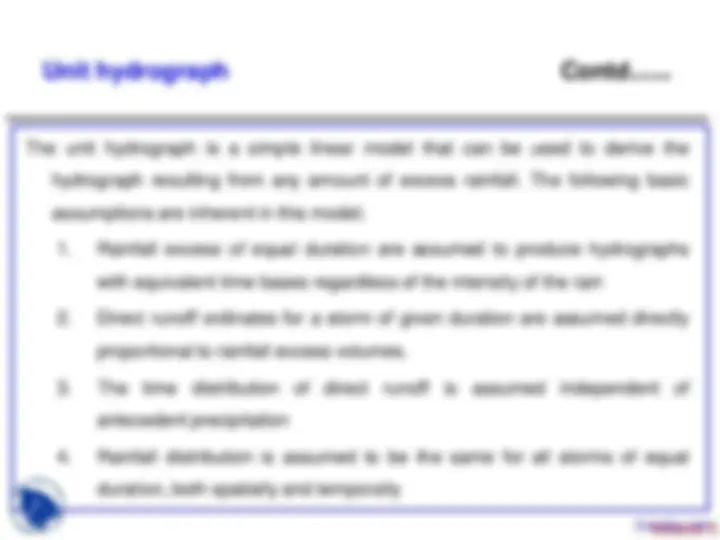
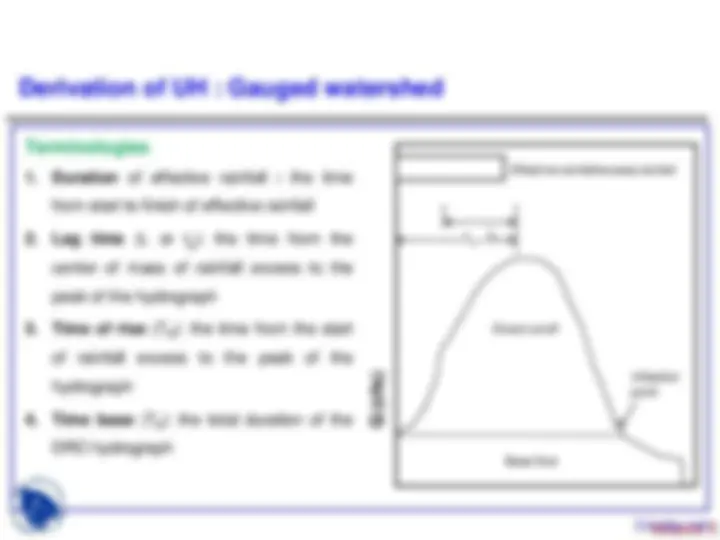
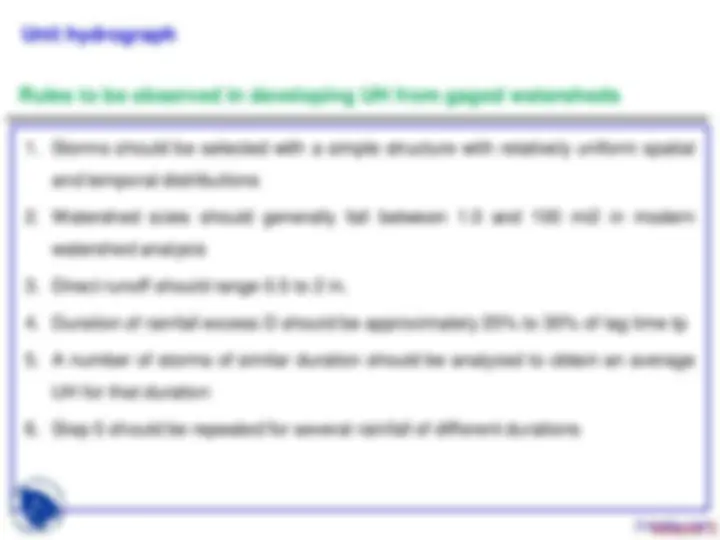
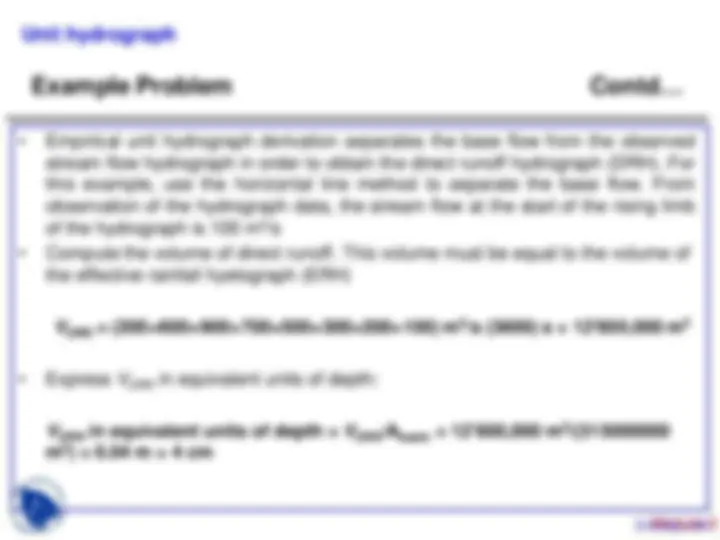
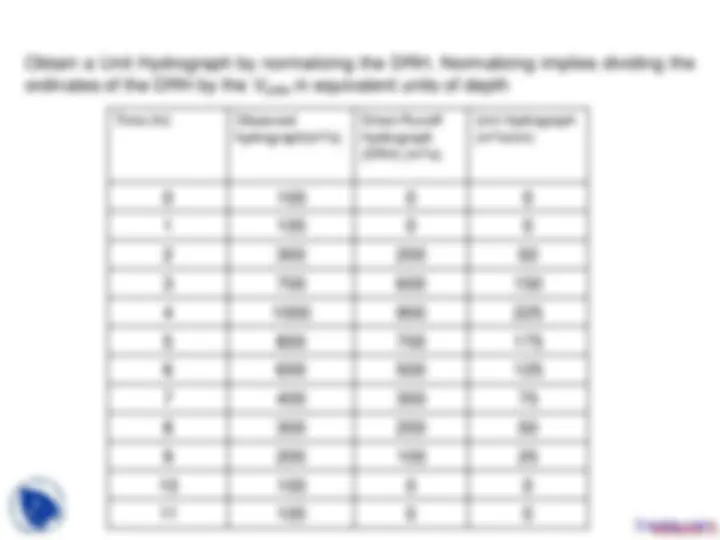
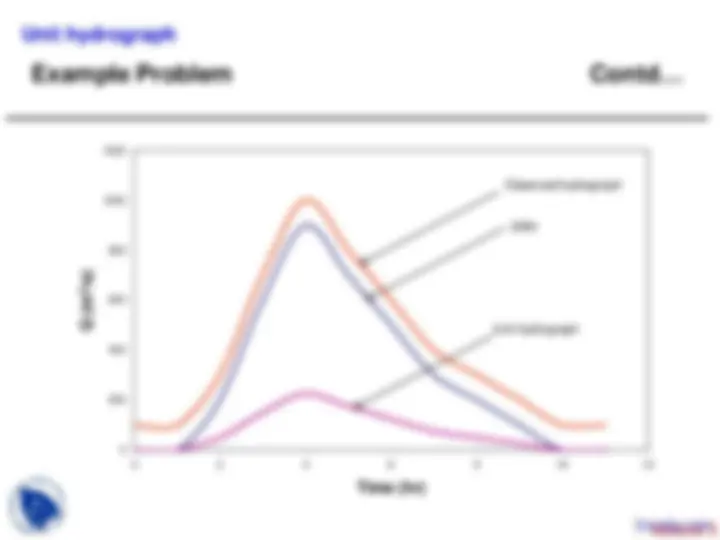


Study with the several resources on Docsity

Earn points by helping other students or get them with a premium plan


Prepare for your exams
Study with the several resources on Docsity

Earn points to download
Earn points by helping other students or get them with a premium plan
Community
Ask the community for help and clear up your study doubts
Discover the best universities in your country according to Docsity users
Free resources
Download our free guides on studying techniques, anxiety management strategies, and thesis advice from Docsity tutors
These are the Lecture Slides of Advanced Hydrology which includes Method of Matching Points, Method of Moments, Maximum Likelihood Method, Population Parameter, Sample Parameter, Estimation etc.Key important points are: Unit Hydrograph, Sherman, Watershed, Runoff Hydrograph, Excess Rainfall, Classified, Sherman
Typology: Slides
1 / 12

This page cannot be seen from the preview
Don't miss anything!







Docsity.com
Docsity.com Module 3
Terminologies
1. Duration of effective rainfall : the time from start to finish of effective rainfall 2. Lag time (L or t (^) p ): the time from the center of mass of rainfall excess to the peak of the hydrograph 3. Time of rise (T (^) R ): the time from the start of rainfall excess to the peak of the hydrograph 4. Time base (Tb ): the total duration of the DRO hydrograph Base flow
Direct runoff
Inflection point
T (^) R^ t^ p
Effective rainfall/excess rainfall
Q (cfs)
Module 3
Docsity.com
Module 3
Docsity.com
Obtain a Unit Hydrograph for a basin of 315 km 2 of area using the rainfall and stream flow data tabulated below.
Time (hr) Observed hydrograph(m^3 /s) 0 100 1 100 2 300 3 700 4 1000 5 800 6 600 7 400 8 300 9 200 10 100 11 100
Time (hr)
Gross PPT (GRH) (cm/h) 0-1 0. 1-2 2. 2-3 2. 3-4 0.
Stream flow data (^) Rainfall data
Module 3
Docsity.com
VDRH = (200+600+900+700+500+300+200+100) m 3 /s (3600) s = 12'600,000 m 3
VDRH in equivalent units of depth = V (^) DRH /Abasin = 12'600,000 m 3 /( m 2 ) = 0.04 m = 4 cm
Module 3
Docsity.com
Module 3
0
200
400
600
800
1000
1200
0 2 4 6 8 10 12
Q (m
3 /s)
Time (hr)
Observed hydrograph
Unit hydrograph
DRH
Docsity.com
Module 3
Docsity.com